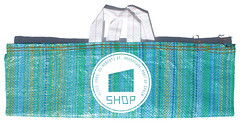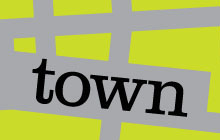In March 2018, I had the privilege of experiencing Alice Yard outside of what had existed mostly in my imaginary from the beginning of my time studying and writing about contemporary art. As Caribbean practitioners, we are aware of the imperativeness of being able to have cross-regional exchanges in physical spaces, not just virtual. We understand the rarity of these spaces and the fragility of sustainability. Alice Yard was a Trinbagonian pin in a map of mobilisation of contemporary Caribbean artists. A place of possibility where glimpses of actions have been relayed through anecdotes, artist talks, conference panels, journal articles, instagram posts. Going in, I was grateful to share in this process and to have the opportunity to be immersed first hand into the space.
Part of my research is to map out how individuals interpret the word “community” — multiplicities of voices as entry points to a seemingly singular term is a key line of inquiry. During the residency at Alice Yard, the more I spoke to friends, colleagues, and soon-to-be friends, logging their responses to the term, it became apparent that there were strong connections to the term community as a verb rather than a noun. In responses, actions were being described to me, not group identities. The most prominent of these was that time was extended generously by those who facilitate and function in the yard, as well as those I met with beyond the yard periphery. Christopher Cozier, who was in the midst of preparing for his exhibition
Occupation As Process at Y Art Gallery, gave immense time to help navigate spaces of interest, from creative production to coffee quality; Sean Leonard, gave so much of his time to connect in the yard and chat; and Nicholas Laughlin, although inundated with deadlines, took the time to support my small project and discuss possibilities of sustainable connections. Beyond the core Alice Yard team, there were also all of the artists, writers, collaborators, curators, organic food producers, people that transcend the parameters of labels, who took the time to visit in the yard, to share their practices and plans and critical discourse, to share sign typography and catalogues and experiences through a road trip to see Trinidad outside of Port of Spain. In a social environment where time is a commodity, the yard space became an alternate social place, an opening of the usual constraints around time.
Sean Leonard, Irénée Shaw, Christopher Cozier, and Nicholas Laughlin
In addition to individual contributions of time and discourse, there was a nucleus of activity that occurred through the yard. There is a the moko jumbie collective
1000 Mokos, run by creatives Kriston Chen and Josh Lu, who aim to build a community of stilt walkers in Port of Spain. The yard acts as the physical terrain for experimentation, with kids and adults exercising trust in themselves and each other to hone skills in the cultural practice of stilt walking. Christopher Cozier’s exhibition included “actions” — installations of play around the Woodbrook area, whether that was three men shifting a concrete headstone into the yard, or pasting a breezeblock work on a wall — expanding the scope of artistic display well into the public sphere.
There were anonymous wall drawings in the communal spaces at Alice Yard, archives of previous encounters — no one seemed to know how they appeared but everyone embraced them. During the facilitation of a “research yard,” the Annex became a community reading room for a weekend, with a mini library containing texts contributed by artists, academics, collectives. Through all of these encounters, it seemed then that community was not really being articulated through identifying groups, but through action by groups. It was the brotherhood of shifting a concrete block from one area of Woodbrook to another for an artistic process; it was the contribution of publications by colleagues to unknown audiences in an open space; it was trusting a stranger to hold you as you tentatively stagger on two-foot wooden stilts to connect with a collective subconscious of a cultural practice.
It was the sharing of joint ambitions with museum colleagues working in Government-led and community-led institutions. It was learning aspects of vernacular through signs, through encountering new yard spaces as cultural hubs, such as East Yard. And mostly, it was the exchange of words — over coffee made by a “grumpy man,” accompanying a mural-in-progress, through the grounds of a sister university, in the middle of a christophene field among giants of nature. Community was openness to possibility through offering of space for pan-Caribbean connections.
My experience was one of many residencies and projects that Alice Yard facilitates, and to me the value of this collision of the imaginary with actuality is the immense humanising of space and discourse. This is something that can get lost among the screen conversations and images that often leave us in existential disconnects, sometimes turning to Anglophone Caribbean postcolonial theory to make sense of what we encounter. Our postcolonial heroes for the most part were advocating for travel, for being physically present, sitting in rooms together, carving spaces of connections. There is a Lloyd Best interview where he emphasises that the importance of a lecture series UWI held in the 1950s was not so much the content provided by presenters, but that a space was financed for young faculty members’ discussions, a space that to Best “really accelerated the process of consciousness, because they paid for the rum and everything. And it really made the campus what it became, which was the eleventh country, what was in fact, an extra country in the federation and that would become important later when the federation broke up.”
In the place where CARICOM doesn’t always equate Caribbean unity, and post-independence nationalism segregates resources for artistic exchanges, Alice Yard can be read as an iteration of prospect through Best’s reading of the “eleventh country” — one of a handful of physical spaces for cross-regional engagement and camaraderie in the Caribbean. We are living and working through constant conditionings of dehumanisation, through the transmission of connections via virtual filters. Alice Yard invites us to suspend that reliance and provides the space (and sometimes the rum) for opening our discourses in our respective practices, for opening the possibilities of exchanges, to generate and sustain more pockets of community as action, of eleventh countries.










